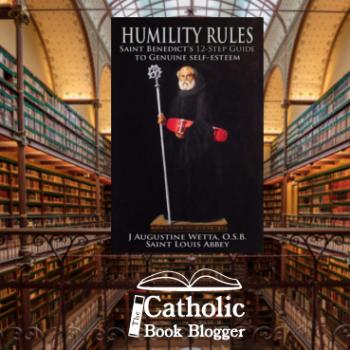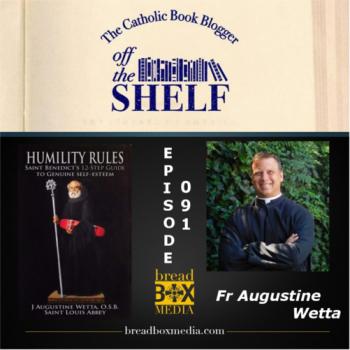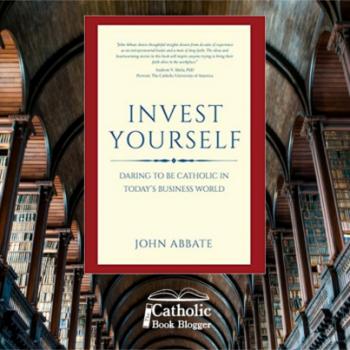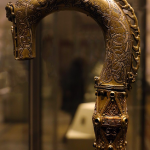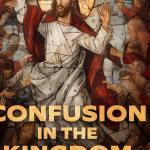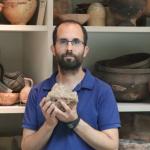 Today my friend and author Maura Zagrans returns to The Catholic Book Blogger to lend a hand as guest reviewer. She reviews two great books by Father Paul Glynn. Take it away Maura!
Today my friend and author Maura Zagrans returns to The Catholic Book Blogger to lend a hand as guest reviewer. She reviews two great books by Father Paul Glynn. Take it away Maura!
Love Songs and Love Letters to Mary
May is the perfect month to read books highlighting miraculous blessings that often flow from heartfelt devotion to the Blessed Mother. Two such books are A Song for Nagasaki: The Story of Takashi Nagai (Ignatius Press, 2009)and The Smile of a Ragpicker: The Life of Satoko Kitahara (Ignatius Press, 2014), both by Father Paul Glynn. Father Glynn’s submersion in Japanese culture during his extensive career as a missionary Marist priest provides a strong foundation for his task of chronicling the life stories of two very special Catholic converts, people whose witness was all the more influential and significant because it was given in a nation where Christians make up less than 1 percent, and Catholics less than 0.5 percent, of the total population.
Fortunately, when Pete Socks invited me to read and review The Smile of a Ragpicker, I listened to an inner voice that urged me to also pick up a copy of A Song for Nagasaki. Both books are pearls that have been set in the prongs of an impressive body of research, and both shine with insight and inspiration. Even though each book stands alone, it is by experiencing them in tandem that readers will be most blessed. Bear with me, then, as I review two separate books at the same time as I try to convey the seismic impact of encountering them as a pair, for to consider one and leave aside the other would be regrettable.
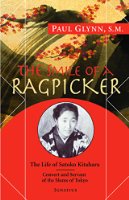 The Smile of a Ragpicker brings to life the story of beautiful Satoko Kitahara, born into a life of privilege and prestige on August 22, 1929. Though she was to die, a victim of tuberculosis, at the young age of 29, she had become so beloved for her selfless efforts on behalf of the homeless, she was embraced throughout all of Japan as a saintly heroine.
The Smile of a Ragpicker brings to life the story of beautiful Satoko Kitahara, born into a life of privilege and prestige on August 22, 1929. Though she was to die, a victim of tuberculosis, at the young age of 29, she had become so beloved for her selfless efforts on behalf of the homeless, she was embraced throughout all of Japan as a saintly heroine.
It is indicative of Satoko’s social standing and her personality, which was at once regal and reserved, that she was nicknamed The Princess by friends and fellow students in university, where she studied pharmacology. There are two defining features of Satoko’s short life. The first is the conversion to Catholicism that was made against cultural odds and despite the wishes of her beloved parents. The second is the evolution of charitable service that we can follow by tracing the arc of her life. Specifically, in 1950, when Satoko first learned about “Ants Town” – a community of homeless people who congregated in crude huts on the muddy banks of a river just a short walk from her parents’ beautiful home — she answered a calling to help by performing acts of mercy. These people and their children struggled to earn a meager existence by picking through the city’s rubbish and then salvaging and selling anything of value. Known in Japan as “ragpickers,” they were the pioneers of recycling. Satoko’s need to nurture found an outlet when she became the teacher and spiritual leader of the children who lived in Ants Town. Pushing outside her comfort zone, Satoko also was an eloquent advocate for Ants Town residents. In the process, she became the darling of Japanese media. Her evolution occurred over the course of eight years, during which time Satoko replaced a superficial understanding of charity with insight into the profound difference between, in her own words, “doing things but neglecting people.” Deciding that becoming one of them was the most authentic way of providing assistance to them, Satoko turned her back on the warmth, comfort, security, medical care, and love that abounded at her parents’ home and chose to live instead among the poorest of the poor.
Mother Mary is present in Satoko’s story in a beautifully riveting way. She enters Satoko’s life in 1949, just prior to Satoko’s graduation from university. Wandering by the Church of the Sacred Heart, Satoko felt a strange force drawing her inside. It was here, inside the first Christian church Satoko had ever entered, that she saw a statue of Mary of Lourdes. From that moment on, Mary was to exert an inexorable influence over Satoko’s life. Subsequently, like concentric ripples reaching ever outward from a stone thrown into water, Satoko’s devotion ushered those who had been touched by the compassionate hands of this earnest young woman into their own redemptive relationships with Mary.
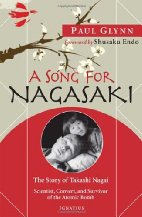 Just as Satoko was to find her spiritual home at the feet of the Blessed Mother, so too did the hero of A Song for Nagasaki find his true purpose in life through the influence of Our Lady. A Song for Nagasaki tells the dramatic story of Dr. Takashi Nagai, a Japanese physician and research scientist whose specialty in radiology cost him his life. Thirteen years into his medical practice, Nagai contracted incurable leukemia as a result of over-exposure to radiation. His career was significant in part because it helped pioneer our modern day understanding of x-ray imaging. Ironically, Nagai’s research interests encompassed atomic structure, nuclear fission, and atomic energy. As a result of both his professional expertise and his unshakable faith, when the A-bomb was dropped on Nagasaki, Dr. Nagai was able to provide sophisticated medical assistance, learned philosophical leadership, and profound spiritual guidance to fellow survivors.
Just as Satoko was to find her spiritual home at the feet of the Blessed Mother, so too did the hero of A Song for Nagasaki find his true purpose in life through the influence of Our Lady. A Song for Nagasaki tells the dramatic story of Dr. Takashi Nagai, a Japanese physician and research scientist whose specialty in radiology cost him his life. Thirteen years into his medical practice, Nagai contracted incurable leukemia as a result of over-exposure to radiation. His career was significant in part because it helped pioneer our modern day understanding of x-ray imaging. Ironically, Nagai’s research interests encompassed atomic structure, nuclear fission, and atomic energy. As a result of both his professional expertise and his unshakable faith, when the A-bomb was dropped on Nagasaki, Dr. Nagai was able to provide sophisticated medical assistance, learned philosophical leadership, and profound spiritual guidance to fellow survivors.
What makes A Song for Nagasaki so intriguing is the way it tells the story of a man at the same time as it tells the story of a city. Reaching back into ancient times, the points of intersection between these two tales are like a dot-to-dot, connecting seemingly insignificant events through the ages and across the miles so that they form an awe-inspiring overarching narrative. The entwined destinies of Nagasaki and Nagai seem to involve God-incidences rather than coincidences.
As a physician and as a soldier, Nagai wrestled with questions about the relationship between science and religion. He believed that science was the key to human progress; prayer was nothing more than superstition. Like Satoko, however, the most significant event of Nagai’s life was his conversion from Shintoism to Catholicism. Introduced to the compassionate love of Mary by the woman who would become his wife, Nagai was transformed. In the end, Nagai concluded that science and religion do not work at cross-purposes. “One must approach the study of any part of God’s creation with profound respect and a certain chastity. A real scientist experimenting in his laboratory is really at one with a monk in his cell. Yes, experiments become prayers!” Most amazing of all Nagai’s theories is his ability to see God’s hand at work even in the bombing of Nagasaki. He said that the bombing was part of God’s plan, which never fails to bring good from evil. Bravely, he told fellow survivors something they did not want to hear. “Let us be thankful that Nagasaki was chosen for the whole burnt sacrifice! Let us be thankful that through this sacrifice, peace was granted to the world and religious freedom to Japan.” Nagai was able to present the events of the day so convincingly he was able to win skeptics over to his radical interpretation. The shattering events of World War II convinced Nagai that the Sermon on the Mount was the perfect practical charter for world peace.
Father Glynn’s books share some important motifs. One is the concept of authentic service to the poor. In Nagai’s words, “Assistance is authentic when it helps restore a person’s dignity.” In following their own destinies, sweet Satoko and courageous Nagai gave witness to the thunderous power of authentic service to others. Another motif running through both books is the critical importance of mentors in our lives. Neither Satoko nor Nagai would have become whom they did if they not been mentored by the marvelous individuals that were placed in their lives at precisely the right moments. These books remind us that an important way to follow the Lord is through mentoring. Finally, the incredible home stretch finishes of both Satoko and Nagai, who accomplished amazing work even on their deathbeds, sound a recurring theme that God is never finished with us until He calls us Home. This is especially true of Nagai. From the bombing of Nagasaki in 1945 until his death on May 1, 1951, Nagai wrote 20 books and averaged 5 letters every day—this despite being desperately ill.
The Smile of a Ragpicker and A Song for Nagasaki sparkle with lovely moments that take some of the sting out of their vivid evidence of man’s inhumanity to man. One technique that infuses the pages with lasting beauty is the way the author explains Japanese ideographs, which give poetic meaning and significance to various names and words. Another is the way that the felt presence of Mary adds grace and a calming influence to biographies that involve a great deal of suffering.
Just as Satoko lived her life as if it were a love song sung to Mary, so did Dr. Nagai live his life as if it were a love letter to Our Lady. The enormous gift we receive from reading these books is the self-assurance that we, too, can express heartfelt devotion to the Blessed Mother as we develop our faith and follow our own personal destinies.
_____________________________________________________________________________________________________






